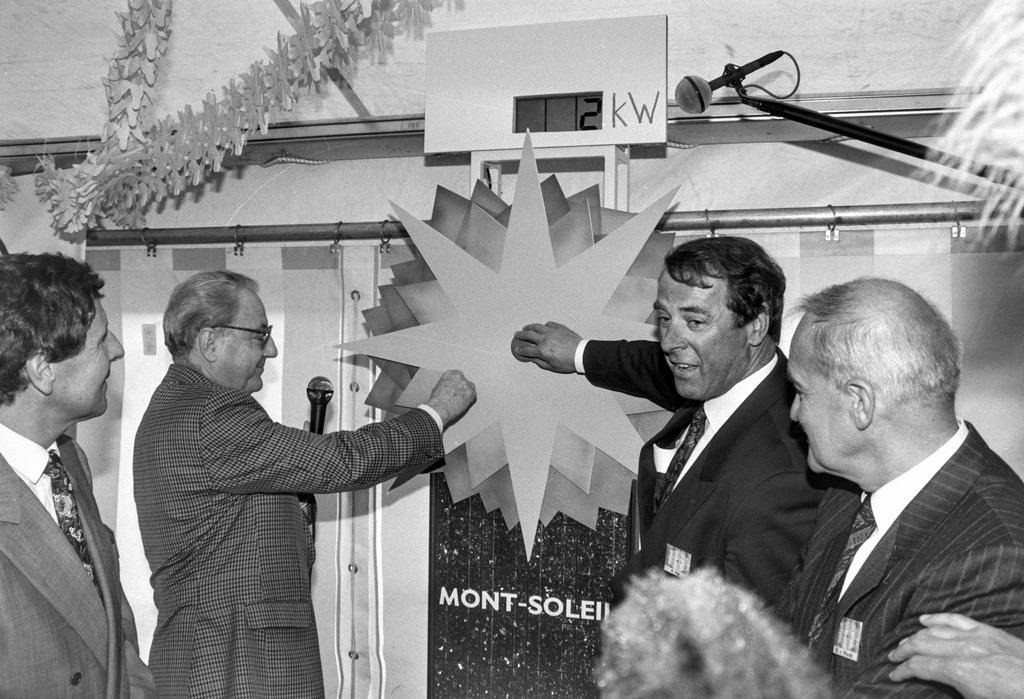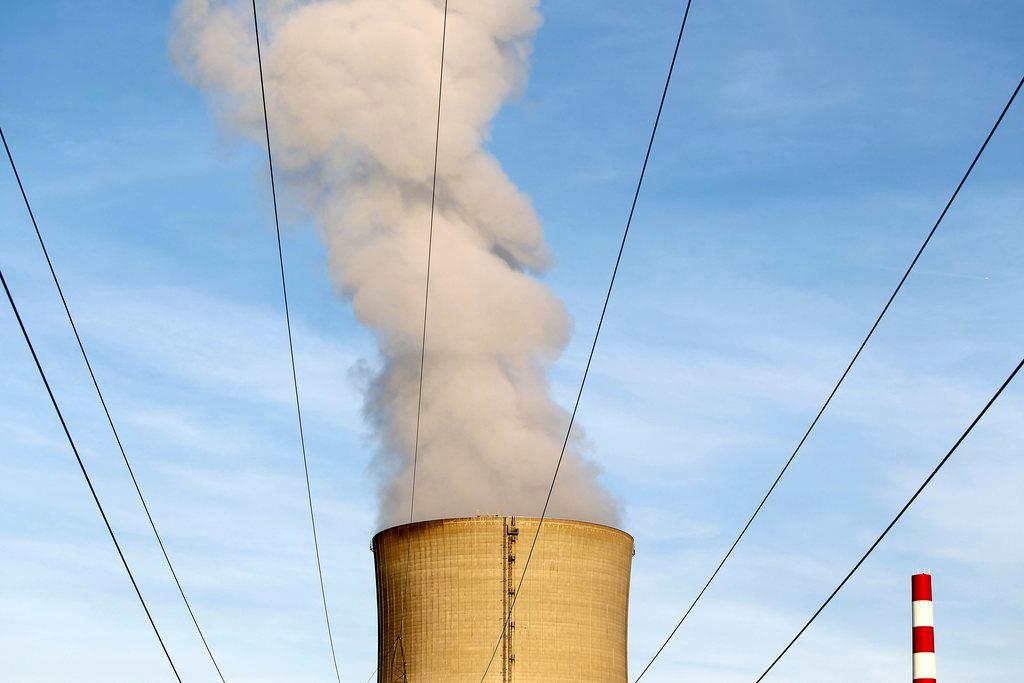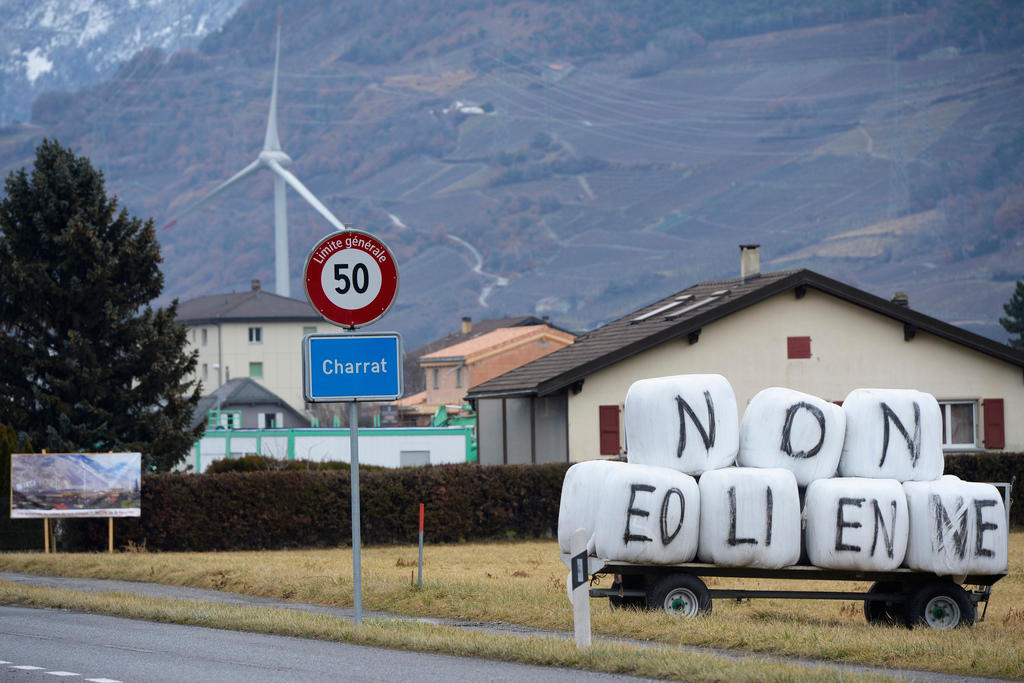Switzerland celebrates 25 years of solar innovation

On April 28, 1992, the first solar power station in Switzerland, the largest in Europe at the time, was inaugurated on the aptly named Mont-Soleil mountain. Twenty-five years on, solar power has made significant strides but is still struggling to truly emerge from the shadows.
“We first looked for sites all over the Alps, but no one was interested. We were regarded as a group of wacky engineers who were throwing money down the drain,” recalls Martin Pfisterer, one of the initiators of the project and current president of the Mont Soleil company, managed by the Bernese electric group BKW.
The solar power station finally found a home in the Jura mountains on Mont-Soleil.
Initial doubts and criticism gave way to awe at the sheer audacity and scale of the project. With 10,560 solar panels scattered over 20,000 square metres at an altitude of 1,200 metres, Mont-Soleil was by far the largest solar power plant in Europe at the time. Its inauguration generated media interest and made an impact beyond national borders.
“The European research community and companies involved in this budding sector immediately showed great interest and came to visit our facilities,” says Pfisterer.

More
A mountain dedicated to renewable energy
Built at an initial cost of CHF8.7 million ($8.75 million), the Mont-Soleil power station still supplies power to 150 households nearly thanks to the 600,000 kWh of electricity produced annually. Profitability, however, was never the goal of the plant’s creators.
“We had three objectives at the outset: to show that it was possible to install such a plant, to advance research and development in the field of solar energy, and to create an information centre for the scientific community and general public,” says Pfisterer.
No stranger to collaborations, including know-how transfer to the Swiss solar aircraft Solar Impulse, Mont-Soleil has no intention of resting on its laurels. It has set itself an ambitious target: to contribute to the improvement of the integration of solar energy into the electricity grid.
“The production of photovoltaic energy varies enormously over the seasons, during the day, and according to the weather conditions. The big challenge in the coming years will be to design storage technologies that will better match production to actual demand,” he says.
Currently solar power accounts for only 2.5% of electricity consumption in Switzerland, around four times less than neighbouring Germany. It is a far cry from the 20% target hoped for by the SwissSolar group if the Swiss people vote in favour of giving up nuclear energy on May 21.
Once a pioneer, is Switzerland too cautious today when it comes to investing in solar energy? No, says Pfisterer, who surprisingly welcomes Swiss caution in this matter.
“Solar energy has a place in the energy future of our country, but it is not a quick-fix solution,” he says. “In Germany, where the installation of solar panels has been largely subsidised, it is sometimes necessary to eliminate excess energy in summer because the issues of storage and flexibility of production have not been resolved. This is not an approach that I consider very intelligent.”

In compliance with the JTI standards
More: SWI swissinfo.ch certified by the Journalism Trust Initiative













You can find an overview of ongoing debates with our journalists here . Please join us!
If you want to start a conversation about a topic raised in this article or want to report factual errors, email us at english@swissinfo.ch.